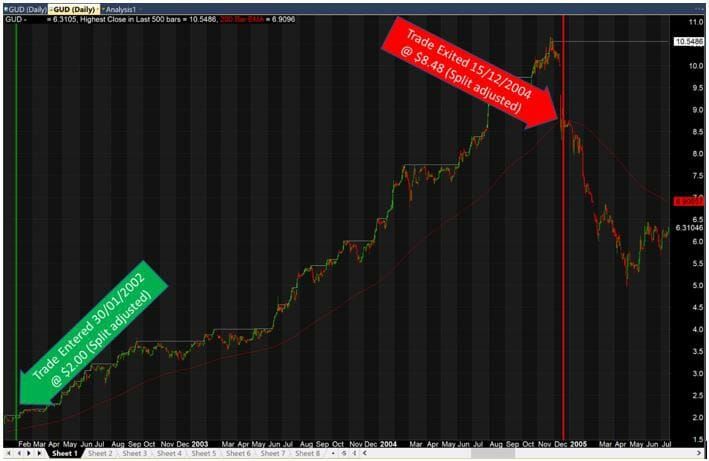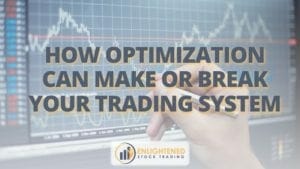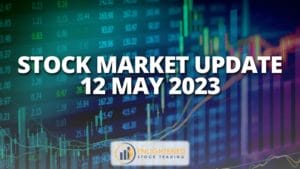Stock trading systems give you a huge advantage in the markets. My goal is to show you how you can use trading systems to improve your results, increase your confidence and reduce the amount of time your trading takes.
There is a huge amount of literature about what you need to become a profitable trader. The hundreds of books and blogs basically boil down to the same three things. We all need:
- A profitable trading method
- Risk management rules that keep us in the game
- Solid trading psychology to stick to our rules
If this is all it takes then why is it so difficult to make money trading?
After trading for almost two decades, my conclusion is that you need to ensure that your trading method fits your personality, objectives and lifestyle or you will make mistakes. You need to ensure your risk management fits you, or large drawdowns will cause stress. Finally your trading psychology must be underpinned by extreme confidence in your trading rules so you don’t quit at the wrong moment.
Most traders take years to develop these areas and become profitable. Luckily for us there is a shortcut which shaves years off this learning journey.
That shortcut is systematic trading.
What are trading systems and systematic trading?
A trading system is a complete set of objective trading rules that defines every action you take in the market. Emphasis should be placed on the words ‘objective’ and ‘every’.
Objective means there is no discretion, the rules tell you exactly what you should do without needing any subjective judgement or external insights to make your decisions. Every action means exactly that. The trading system defines exactly when to buy, how much to buy and when to sell.
In order for a trading system to be complete it must at least have the following components:

Trading System Component
Let’s use a simple example to illustrate the concept:
Setup: The setup is the conditions under which we will consider trading a particular instrument.
For example, the stock must be liquid enough for trading with an average daily turnover of over $500k for the last 20 bars.
Entry: The exact point at which we will enter a trade.
For example, buy tomorrow at the open if today’s close is the highest close of the last 500 bars.
Exit: The exact point at which we will exit a trade.
For example, sell tomorrow at the open if the stock closes below the 200 bar moving average.
Initial Stop: The level at which you will exit the trade if you are wrong. Some systems do not need a stop loss, however exercise caution if you are not using one.
For example, place a stop loss in the market 6 times the average true range below your entry price.
Risk Management: Limit the amount of risk taken on each trade and the total exposure so that you can stay in the game and the maximum drawdown is tolerable.
For example, risk 0.5% of your account on each trade and do not trade with leverage. Give highest priority to new trades which have moved by the greatest percentage over the past 200 trading days.
Note: This is an example of a simple trading system which captures long term trends. It cuts losses and lets profits run. I am not recommending you trade with it, let’s just use it as an example for now.
Here is an example of a solid winning trade generated by the system (I did say this was a long term trend following system!)

Long Term Trend Following
This is clearly a well-chosen example, so the obvious question to ask is how does the system perform when traded in a portfolio. This brings us to one of the main advantages of trading systematically.
Backtesting – The systematic trader’s advantage
While most new traders using technical analysis spend months pouring over charts, looking at indicators and paper trading to get a general idea whether their rules are profitable, the systematic trader can test their trading rules over thousands of trades, and decades of market history in just seconds. This process is called backtesting.
At a high level this is how it works:
- You define your trading rules in backtesting software such as Amibroker
- The software uses historical market data to identify the past trades generated by your rules
- It calculates the entry price, exit price, position size and profit for each historical trade
- It assembles the trades into a portfolio and gives you a detailed performance report
To perform this sort of backtest and then trade systematically for yourself you don’t need real time data, complex computing infrastructure, automated trading or a computer science degree. You just need a laptop, end of day historical data and trading software such as Amibroker and your trading account.
The great power systematic trading gives you is the depth of analysis you can do very quickly. Using this trading setup it takes less than 30 seconds to test our rules on all Australian stocks over the last 27 years. The backtest generates a portfolio with over 1000 historical trades and a detailed performance report.
Here is a selection of results from the performance report of our example trading system (including 0.5% per side for slippage and commissions):
- Compound annual return: 17%
- Maximum historical drawdown: 30%
- Average profit per trade: 20.4%
- Percentage of winning trades: 37%
- Average win / average loss: 4.4
The equity curve generated from the backtest is below.

Equity Curve
At this point some might jump up and down saying past profitability does not guarantee future profitability. While that is true, I will say this:
“While a profitable backtest does not guarantee future profitability,
an unprofitable backtest certainly guarantees future losses”
Done correctly backtesting will help you design robust profitable trading systems that will generate profits for years or even decades. We will explore backtesting principles in future articles.
The many benefits of systematic trading
Trading systematically gives you far more benefits than simply the ability to backtest. Some benefits include:
- Shorter learning curve because you find profitable methods and build confidence sooner
- Repeatable results because you make consistent decisions
- Reduced impact of your psychology because the system bypasses your biases and fears
- Lower risk because you can diversify more broadly
- Reduced time because the software scans the market to find your trades
Perhaps best of all, systematic trading empowers you to answer all those niggling questions you have like “should I use a profit target?”, “should I place my stop loss in the market?” or “how big could my drawdown get?”
My goal is to empower you to backtest your trading ideas correctly, answer questions like this for yourself and show you the path to profitable systematic trading.
If you want to take the next step, Join my FREE Enlightened Stock Trading Facebook group.
This article was written by Adrian Reid, Founder of Enlightened Stock Trading and was first published in Your Trading Edge Magazine








You made a number of good points there. I did a search on the theme and found the majority of persons will go along with with your blog.
Awesome – thanks for your comment! I hope your trading is going well.
Adrian